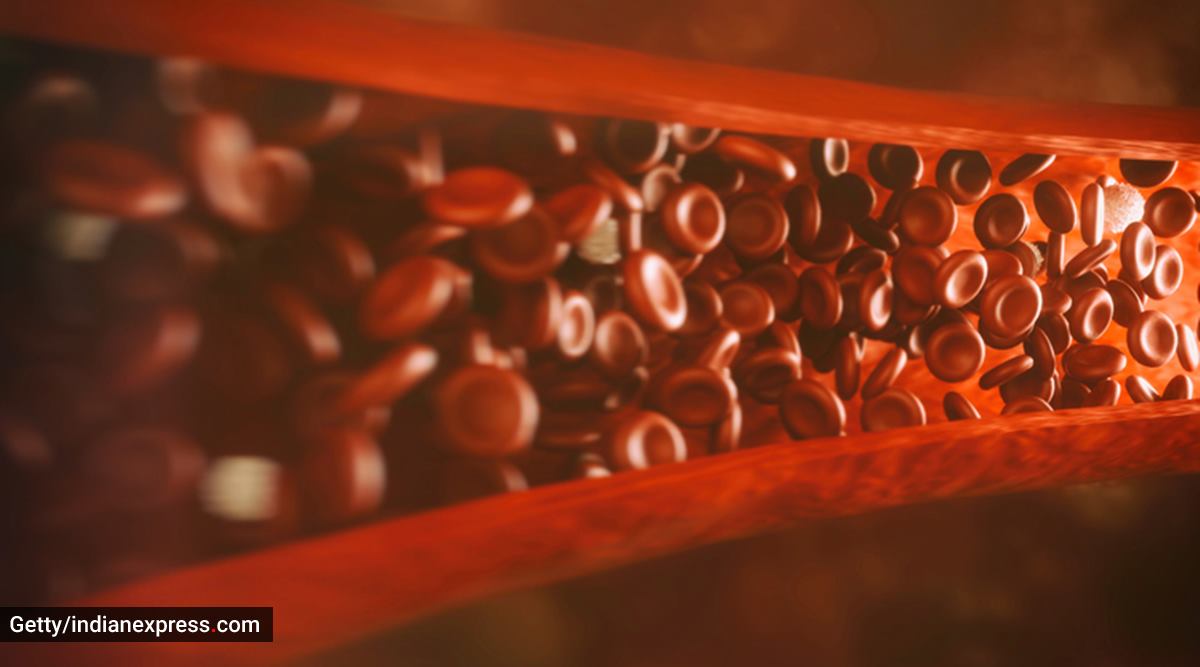 If the patient has arrived at the hospital at an early stage, i.e., within 8 hours to a maximum of 24 hours, thrombolysis or thrombosuction can be performed during the angiography. (Photo: Getty/Thinkstock)
If the patient has arrived at the hospital at an early stage, i.e., within 8 hours to a maximum of 24 hours, thrombolysis or thrombosuction can be performed during the angiography. (Photo: Getty/Thinkstock) One of the many complications that we are discovering about COVID-19 is how it can cause an increased tendency of the blood to thrombose or clot. Apart from the veins, it has been seen that Covid also increases risk of clots in arteries called as arterial thrombosis. These clots can block the blood circulation in the extremities leading to gangrene with amputation or removal of the limb as the only choice to save life of the patient. These blood clots can also travel all over the body and wreak havoc on distant organs.
How are these clots formed, what can it lead to, and what is the treatment available? Dr Raghuram Sekhar, consultant, vascular and endovascular surgery, Kokilaben Dhirubhai Ambani Hospital answers all your questions.
What is COVID-19 related arterial thrombosis?
While it was known that COVID infection can lead to clots in veins, over the last few months there have been cases of clots forming in arteries that carry oxygen-rich blood to our body from the heart). This is referred to as ‘arterial thrombosis’. When the blood flow in the artery gets blocked by the clots, the oxygen supply to our body parts is cut off leading to gangrene. If not treated in time, it can lead to amputation of the limb. I have treated over 35 COVID patients with these blood clots in the limbs during the pandemic. In the second wave, I have seen cases in younger people below 32 years of age. These gangrenous blood clots are aggressive and difficult to treat.
What is reason for clot formation?
Studies indicate that COVID-19 infection leads to an increase in the viscosity of the blood. The blood thickens, which in turn leads to formation of clots. The exact cause for the thickening of the blood has not yet been identified.
Does this happen only when the patient is Covid positive?
No. In majority of the cases, the symptoms make themselves visible only 2-3 weeks after recovering from COVID, when the patients are discharged and in the comfort of their own home. This can lead to the symptoms being missed by the patients leading to delay in treatment. Hence, it is important to understand the symptoms presented by COVID arterial thrombosis.
What are the symptoms of Covid arterial thrombosis?
There are five early signs of COVID-19 related arterial thrombosis that one should be aware of, which can be defined by five ‘Ps’. The first P is for ‘pain’ in the limbs whose intensity gradually grows over time rendering the patient in extreme pain. The second symptom is ‘paresthesia’, which is numbness is the fingers and toes. The third P stands for ‘paralysis, where we lose movement in our limbs. The penultimate P called ‘pallor’, is paleness due to lack of blood supply, which then progresses to the limbs turning blue or black over time. Pallor paired with coldness is one of the first signs of gangrene settling in. At this point it is almost impossible to feel the ‘pulse’ on the extremities, which is the fifth symptom. For a COVID patient who has recovered, it is paramount to be aware of these symptoms as, if caught on time and treated appropriately the patient can be completely cured of the disease.
When should a patient visit the doctor if these symptoms occur?
The ‘golden period’ to treat this disease is the first 6-8 hours after the symptoms are noticed. During this time, if the patient consults a vascular surgeon, the treatment can be instituted and the limb saved.
How is the condition diagnosed?
In most cases when a patient arrives at a hospital with these symptoms, a vascular surgeon will examine them and perform a procedure called ‘vascular doppler’. This color doppler is essentially a sonography for the blood vessels to show the blockage. Post this procedure, an angiography is required in most cases. Just like when an angiography is performed on the heart for a heart-attack, a peripheral angiography is performed on the limbs in the case of arterial thrombosis. This helps the vascular surgeon to deduce the severity of the clots and form a treatment plan.
What is the treatment for Covid arterial thrombosis?
If the patient has arrived at the hospital at an early stage, i.e., within 8 hours to a maximum of 24 hours, the clot may not have hardened fully. In such cases, thrombolysis or thrombosuction can be performed during the angiography itself, where medicines and prescribed chemicals are sent through the blood vessels to dissolve the clots.
At times, the patient may arrive late and by this time, the clots have hardened and cannot be treated by thrombolysis. This then requires an open surgery, with patients under full anaesthesia and incisions made to reach the clot in the vessels. The procedure is called Embolectomy. This is also quite success, if the patient comes to the hospital within the first 1-2 days.
Thus, if diagnosed on time, the limbs can be saved from gangrene setting in and amputation.
To sum things up, patients must be well-informed and well-read about the symptoms of arterial thrombosis, while actively making those around them aware of the same. I will emphasize again that as soon as the symptoms start showing, one must consult a vascular surgeon/ facility at the earliest to avoid gangrene and amputation and continue to live a full and healthy life.
- The Indian Express website has been rated GREEN for its credibility and trustworthiness by Newsguard, a global service that rates news sources for their journalistic standards.

